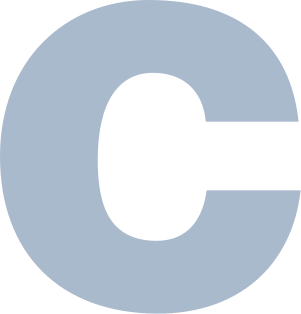PL/I is a procedural, imperative computer programming language designed for scientific, engineering, business and system programming uses. It has been used by various academic, commercial and industrial organizations since it was introduced in the 1960s, and continues to be actively used.

John Warner Backus was an American computer scientist. He directed the team that invented and implemented FORTRAN, the first widely used high-level programming language, and was the inventor of the Backus–Naur form (BNF), a widely used notation to define formal language syntax. He later did research into the function-level programming paradigm, presenting his findings in his influential 1977 Turing Award lecture "Can Programming Be Liberated from the von Neumann Style?"
This is a "genealogy" of programming languages. Languages are categorized under the ancestor language with the strongest influence. Those ancestor languages are listed in alphabetical order. Any such categorization has a large arbitrary element, since programming languages often incorporate major ideas from multiple sources.
In computer programming, M-expressions were an early proposed syntax for the Lisp programming language, inspired by contemporary languages such as Fortran and ALGOL.
In computer science, a for-loop is a control flow statement for specifying iteration, which allows code to be executed repeatedly. Various keywords are used to specify this statement: descendants of ALGOL use "for", while descendants of Fortran use "do". There are other possibilities, for example COBOL which uses "PERFORM VARYING".
Coarray Fortran (CAF), formerly known as F--, started as an extension of Fortran 95/2003 for parallel processing created by Robert Numrich and John Reid in the 1990s. The Fortran 2008 standard now includes coarrays, as decided at the May 2005 meeting of the ISO Fortran Committee; the syntax in the Fortran 2008 standard is slightly different from the original CAF proposal.
In computer programming, a statement is a syntactic unit of an imperative programming language that expresses some action to be carried out. A program written in such a language is formed by a sequence of one or more statements. A statement may have internal components.
WATFIV, or WATerloo FORTRAN IV, developed at the University of Waterloo, Canada is an implementation of the Fortran computer programming language. It is the successor of WATFOR.
ALTRAN was a FORTRAN extension providing rational algebra, developed by W.S. Brown, at Bell Labs around 1968.
Programming languages are used for controlling the behavior of a machine. Like natural languages, programming languages conform to rules for syntax and semantics.
Digitek was an early system software company located in Los Angeles, California.

Chapel, the Cascade High Productivity Language, is a parallel programming language developed by Cray. It is being developed as part of the Cray Cascade project, a participant in DARPA's High Productivity Computing Systems (HPCS) program, which had the goal of increasing supercomputer productivity by the year 2010. It is being developed as an open source project, under version 2 of the Apache license.
f2c is a program to convert Fortran 77 to C code, developed at Bell Laboratories. The standalone f2c program was based on the core of the first complete Fortran 77 compiler to be implemented, the "f77" program by Feldman and Weinberger. Because the f77 compiler was itself written in C and relied on a C compiler back end to complete its final compilation step, it and its derivatives like f2c were much more portable than compilers generating machine code directly.
Elliot Bruce Koffman is a noted computer scientist and educationist. He is the author of numerous widely used introductory textbooks for more than 10 different programming languages, including Ada, BASIC, C, C++, FORTRAN, Java, Modula-2, and Pascal. Since 1974, he has been a professor of computer and information sciences at Temple University, Philadelphia, Pennsylvania.
Lois Mitchell Haibt is an American computer scientist best known for being a member of the ten-person team at IBM that developed FORTRAN, the first successful high-level programming language. She is known as an early pioneer in computer science.
Some programming languages provide a complex data type for complex number storage and arithmetic as a built-in (primitive) data type.
Language support for array types may include certain built-in array data types, some syntactic constructions that the programmer may use to define such types and declare array variables, and special notation for indexing array elements. For example, in the Pascal programming language, the declaration type MyTable = array [1..4,1..2] of integer, defines a new array data type called MyTable. The declaration var A: MyTable then defines a variable A of that type, which is an aggregate of eight elements, each being an integer variable identified by two indices. In the Pascal program, those elements are denoted A[1,1], A[1,2], A[2,1],… A[4,2]. Special array types are often defined by the language's standard libraries.
GoTo is a statement found in many computer programming languages. It performs a one-way transfer of control to another line of code; in contrast a function call normally returns control. The jumped-to locations are usually identified using labels, though some languages use line numbers. At the machine code level, a goto is a form of branch or jump statement. Many languages support the goto statement, and many do not.



